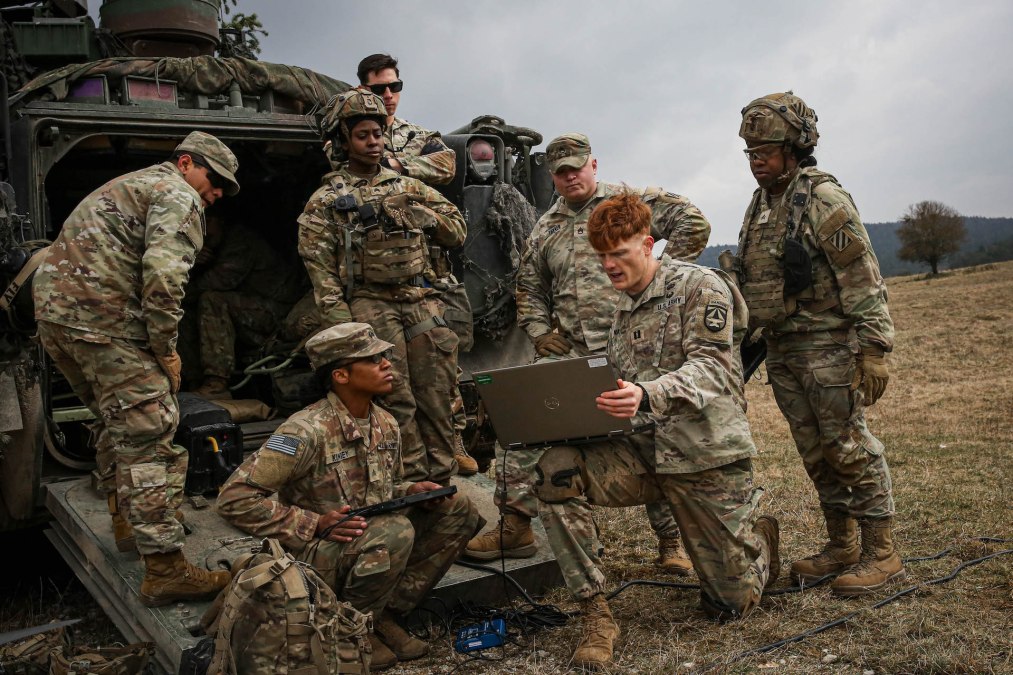Army outlines progress on ‘unified network’

PHILADELPHIA — Senior Army leaders, from Chief of Staff Gen. Randy George to Futures Command head Gen. James Rainey, have talked about how the service needs to fix its network. Officials overseeing that transformation see progress being made, but much more work lies ahead.
While the Army has undergone a long process to modernize its tactical network, in the last two years it has also undertaken a new effort that aims to merge its tactical and enterprise networks into a true single global network that transcends theaters, even going as far to create a new integrated program executive office that combines each.
“When we talk about fixing the Army’s network, we talk about getting to one unified network, so we have one process for identity, one process for network operations, one process to defend our network, one process for just to authenticate,” Mark Kitz, program executive officer for command, control, communications-tactical, said in an interview May 29 at the Army’s Technical Exchange Meeting in Philadelphia.
Kitz acknowledged that fixing the network also includes delivering a holistic network and addressing the future of command and control.
Historically, the Army’s network was siloed by theater and it was difficult for forces to plug in when they moved or deployed. Moreover, there were difficulties when trying to access or pass data from theater to theater and tactical to enterprise, a lesson learned the hard way when forces deployed to the Middle East on two occasions: following the U.S. drone strike that killed Iranian Maj. Gen. Qassem Soleimani and for the American withdrawal from Afghanistan.
It took days to get the responding unit to the Soleimani incident to connect to the network.
“We built capability sets, we made them very, very [brigade combat team] centric, so that through 20 years of war in the Middle East, we could deploy BCTs rapidly, plug them into the network and get them on mission and fight. That approach simply will not work in today’s world,” Lt. Gen. John Morrison, deputy chief of staff, G-6, said at the conference. “What we did was we pushed all the complexity down to the lowest possible echelon and we made multiple stovepipes inside our divisional formations and quite frankly, didn’t even think about what we were doing with our enabling formations. I cannot imagine — and I grew up in divisions — maneuvering a division today with the way that we have complexity aligned within our formations.”
During the counterinsurgency fight of the last 20 years, the brigade was the primary unit of action. Now, as the Army plans for large-scale combat operations against sophisticated nation-states, the division must now be that main unit of action given the vast distances of operations and complex problems those actors will pose.
Moving complexity up and transforming in contact
Key to realizing a unified network and enabling units to focus on fighting at the tip of the spear is moving the complexity of the network to higher echelons where there are more resources to manage it.
“We are shifting rapidly away from individual brigade combat team capability sets to a divisional architecture that includes all the enabling formations that that division needs to fight, so that we can get brigades back to what they need to be doing: maneuvering and engaging and destroying our adversaries,” Morrison said. “Raise that complexity up to the division and corps level, so that at the lowest levels, it is simple, intuitive, and very, very easy for commanders to command and control their formation.”
To help accelerate efforts to improve the network, the Army is “transforming in contact,” a concept that involves using deployments and troop rotations to test new equipment — mainly commercial off-the-shelf gear — to allow units to be more responsive on a dynamic battlefield.
“We won’t learn the lessons that we need to in quite frankly, when you have a deployed formation that is the best time for a unit to learn,” Morrison said.
The Army gave the 101st Airborne Division a division-centric architecture and capability package to test in March. With that enhanced set, the service is learning that commanders within that division and elsewhere are using it in ways the network community didn’t intend. Units were smaller and had lighter and more mobile command posts that could be moved in 10 minutes or less and then reestablished; commercial transport capabilities from proliferated low-Earth orbit to 5G that allowed units flexible communication paths and to hide in plain sight from an electromagnetic signature perspective; and the ability to remote away from tactical operation centers, improving survivability.
“When I talked about the 101st, that’s what we’re laser focused on is getting that divisional architecture straight, smaller, lighter, more agile capabilities, mixing in select commercial capabilities, where it is proven, and then pulling that complexity up,” Morrison told DefenseScoop in an interview. “That’s all about fighting tonight and getting that in place, because what we don’t want to do is wait for the next thing when there’s immediate technical and integration adjustments … bringing military and commercial capabilities together, securely, that we can make right now that’s going to enable a division commander to really maneuver his or her formation.”
Morrison explained that there have been dramatic improvements in the network over the last couple of years but there is still more work to do.
While the Army will never be finished with its network — much how commercial companies are never fully done — the service will know it’s in a good place when commanders are in the position to command and control their formations and aren’t fighting to do so.
“This has all got to be centered on the commander and his or her ability to command and control their formations,” Morrison said. “You’ve got to start with are you achieving the operational outcome that we desire? That’s what we want. We don’t want a commander tethered to a vehicle, a platform or anything, fighting to command and control their formations. It should not be work.”
At higher echelons, such as corps and the theater Army level, the service is working toward greater connectivity, which will be even more important in large-scale combat operations given sophisticated nation-states will cross artificial theater boundaries, and the effects the U.S. wants to bring could originate in other theaters.
“A theater is going to fight from wherever they’re at and they need to be able to immediately plug in, whether they’re in their headquarters or whether they displace to a bunker or whether they displace to a field location,” Morrison said. “We’ve got to wrap that global umbrella about it so that they’re able to go wherever. Then corps and divisions are able to just plug in very, very seamlessly and data is immediately flowing across all three of those echelons.”
As part of the unified network effort, the Army has rolled out capabilities such as unified security incident and event monitoring, which is part of centralizing the delivery of services with the aim of providing end-to-end network visibility across all echelons, spanning the strategic enterprise level all the way to tactical formations.
This SIEM capability is at every theater and has improved the ability to monitor anomalous behavior like never before.
Previously, when a tactical formation such as a brigade would deploy to a theater, the unit would be a local instantiation unto themselves. That meant they were responsible for setting up and monitoring their slice of the network. If their network manager failed to catch anomalous activity, it was likely that it would never be discovered.
Now, with capabilities like SIEM — combined with the idea of moving complexity to higher echelons that have more resources — there is overwatch of tactical formations that are constantly maneuvering.
“If something bad or something is happening on the network that needs to be investigated, you now have tipping and queueing going back and forth to where that brigade [network manager], who probably never ever had the time to deal with it anyway, or if they did, it was a lucky catch, has now got somebody who does have the time and they’re looking at it and it’s automated,” Morrison said. “That ability to do that tipping and queuing all by itself is something that, quite frankly, it was merely a vision a few years ago. Now it is practical reality.”
This activity is also bringing Army Cyber Command more into the tactical battlefield fight in ways they weren’t before.
“Our next step is to link it all the way back to the global ARCYBER enterprise so at Fort Eisenhower [in Georgia] in the cyber headquarters, we’ve even got a global look now at what’s happening so that if there is a security incident, we can immediately find it and mitigate it no matter where it’s at,” Morrison explained. “If you talk about a notion of a unified network or a unified SIEM implementation, I will tell you is the model for how to approach it.”
The old way of separate tactical and enterprise-based networks, that differentiated theater by theater, will not work if the Army wants to conduct multi-domain operations.
“Horizontal unification and it’s a vertical unification between strategic, operational and tactical. That is when we will know that we’re able to really conduct multi-domain operations anywhere in the world quickly and seamlessly,” Morrison said.



